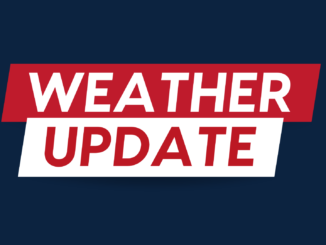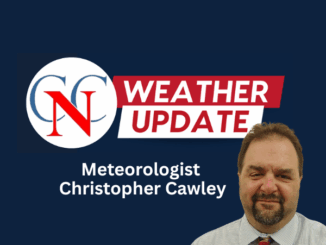
How D&O Insurance Safeguards Executives From Regulatory Risks
D&O insurance gives leaders a dependable layer of protection as regulatory pressure grows across many sectors. Compliance expectations can shift without warning, and even well-intended decisions may later draw scrutiny from agencies or stakeholders.
Executives often face personal exposure that creates financial and emotional strain, especially when investigations begin. For instance, a false accusation can affect their personal branding. This can further affect their job and network connections at the workplace. Moreover, they may be subjected to fines, which can influence their decision-making beforehand.
D&O coverage helps reduce that burden so leadership teams can focus on steady guidance rather than worrying about private legal costs.
Protection During Investigations
Executives may be subject to investigation inquiries based on the type of business they operate in. For instance, there are different types of Food & Drug Administration (FDA) inspections involved in businesses that operate in consumable goods and drugs. The FDA says that there are surveillance inspections, for-cause inspections, and follow-up inspections.
Regulatory inquiries often start with requests for documents, interviews, or explanations. These early steps demand quick responses, and executives usually need legal support before a claim even takes shape. Such groundwork can lead to rising expenses, and the stress can build long before there is any clear outcome.
Many leaders want a clearer picture of how their coverage helps during these early phases. According to Oakwood Risk Insurance Solutions, D&O insurance can cover shareholder actions, breach of duties, non-compliance with laws, reporting errors, etc. In fact, the coverage can protect them against both actual and alleged wrongful acts.
Insurers often provide support that allows executives to respond with accuracy and confidence, and this can shape the direction of the entire review. Executives should learn more about how early legal guidance funded through the policy makes the difference between a short inquiry and a drawn-out process. This kind of backing helps executives stay composed and organized as agencies request additional information or ask follow-up questions.
How do executives prepare for an unexpected request from regulators?
Executives often benefit from building a clear internal communication path before any inquiry appears. This helps teams collect information quickly and reduces delays that might create confusion. Preparation also includes having legal advisors ready to review requests, keep messaging consistent, and help leadership respond with confidence.
Financial Support During Enforcement Actions

Some inquiries escalate into enforcement actions that challenge past decisions or oversight efforts. These cases can involve long timelines, multiple hearings, and extended negotiations. Legal costs rise quickly, especially when several individuals are asked to participate.
A Legal Dive article notes that big law firms charged as much as $961 an hour in the first three quarters of 2023. This was a 4.8% increase compared to what they charged throughout 2022. The rates increased only 1.5% in 2022 when compared to 2021. This means that the average costs are increasing every year.
D&O insurance covers many of the expenses tied to defense efforts and helps protect leaders from carrying that weight alone. Extended actions can wear down even seasoned teams.
Without coverage, executives might limit their legal options because of personal financial concerns. With coverage in place, they can pursue a full defense and allow their legal team to work through each step with steady focus.
Do enforcement actions affect future access to insurance coverage?
Enforcement actions may raise questions from insurers, but organizations can often maintain coverage when they demonstrate strong oversight practices. Transparent internal procedures, steady compliance training, and clear documentation help insurers understand the company’s risk profile. These factors influence policy renewal discussions and can support the continuation of meaningful protection for executives.
Strengthening Board Stability
As a PwC survey found, the compliance ecosystem is becoming more complex and connected than ever. Around 77% of executives said that the changing compliance landscape has negatively affected their companies to some or a great extent. Moreover, 59% of executive respondents said that they can make better compliance decisions with better coordination.
This coordination can come when boards perform together. And boards can perform better when members feel supported rather than exposed. D&O insurance plays a meaningful role in creating that sense of security.
Leaders know they can make thoughtful decisions without worrying that an unexpected regulatory shift might lead to personal financial loss. This helps maintain a calm atmosphere even during periods of growth, restructuring, or market tension.
Seasoned professionals also look at available protections before joining a board. Strong coverage shows that the organization respects the demands placed on executives and wants to reduce unnecessary personal risk. This strengthens recruitment efforts and reinforces confidence within the leadership group.
How does D&O insurance influence long-term board culture?
A board that feels supported tends to hold discussions with more openness and less hesitation. The presence of coverage reassures members that honest disagreements or bold strategic choices will not expose them to personal financial strain. This encourages steady participation, reduces internal friction, and helps the board maintain a healthy decision-making environment.
Addressing Claims Linked to Compliance Concerns
Executives usually don’t miss regulatory compliance intentionally because of the resulting costs. As Help Net Security notes, non-compliance can cost businesses 2.71 times more than following the regulations. For instance, the Securities and Exchange Commission (SEC) issued over $500,000 in SOX penalties.
Thus, these mistakes are often unintentional, arising from the complex regulatory landscape. These issues can lead to claims from investors, employees, or customers who believe a board missed warning signs or overlooked important information.
Regulatory claims vary in complexity and often unfold alongside agency actions. D&O insurance supports executives through the legal process, helping manage the financial and strategic challenges that follow.
Coverage also encourages steady communication between leadership, legal advisors, and insurers. This teamwork helps the organization respond clearly during stressful periods while giving executives the backing needed to continue their responsibilities without major disruption.
Regulatory expectations can shift with little notice, and these changes often test the composure of leadership teams. D&O insurance provides a sense of safety that allows executives to continue making sound choices without carrying all the risk on their own. Leaders can stay focused on long-term goals knowing they have a reliable support structure behind them.
Understanding policy details helps organizations choose the right level of coverage. With that clarity, executives can move forward with confidence. They can respond to compliance demands with steady judgment and guide their teams through uncertain moments with less pressure on their personal finances.
(Contributed Content)
























